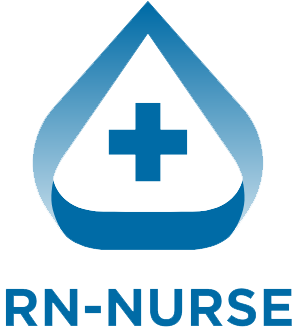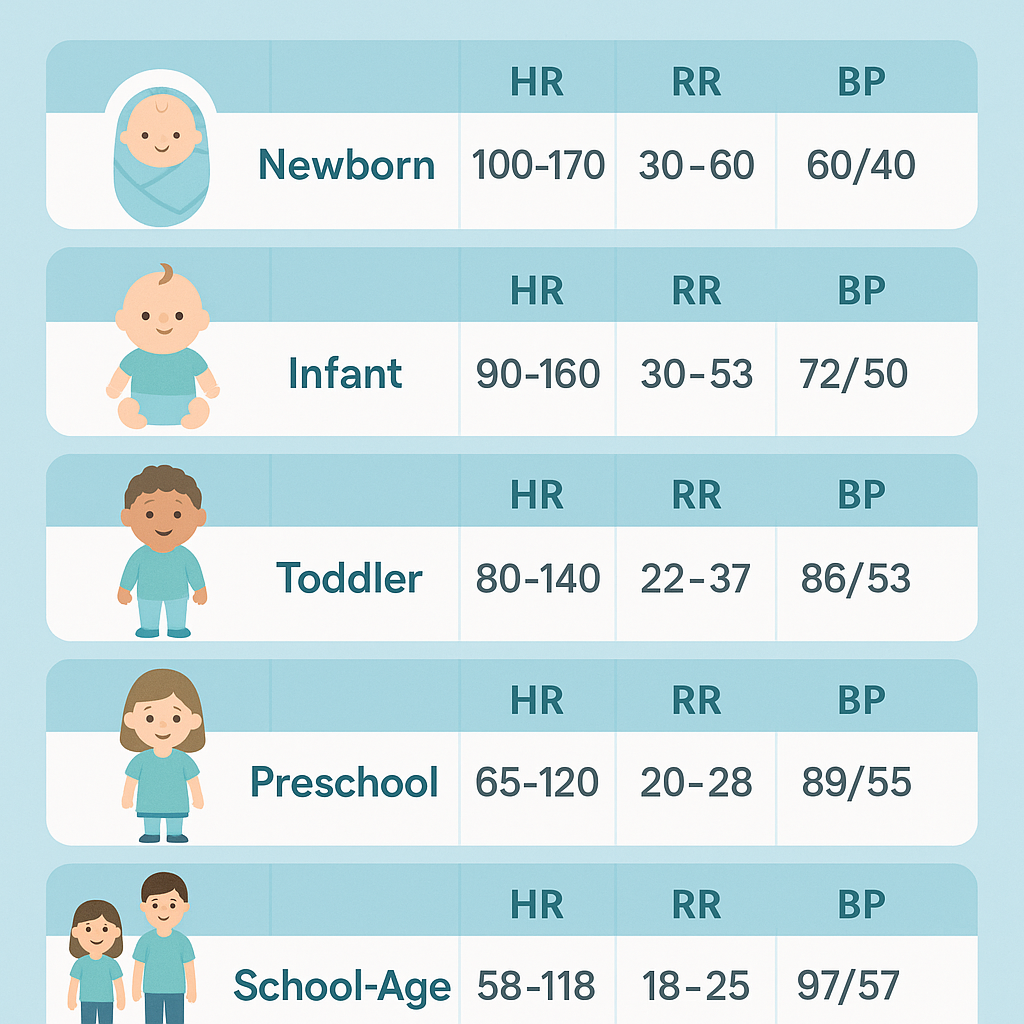Understanding pediatric vital signs is a must for every nurse and nursing student preparing for the NCLEX. Unlike adults, children’s heart rate, respiratory rate, and blood pressure vary greatly depending on their age and developmental stage. For a registered nurse (RN nurse) working in pediatrics, emergency, or med-surg, knowing these normal ranges helps identify early signs of distress and ensures safe, effective care.
This article provides a simplified pediatric vital signs chart, along with nursing considerations and tips that can support your practice and even serve as a quick reference for your nursing bundle of study tools.
Why Pediatric Vital Signs Matter for Nurses
In pediatrics, “normal” is different at each stage of growth. For example:
- A newborn’s heart beats much faster than an adult’s.
- Blood pressure gradually rises with age.
- Respiratory rates are higher in infants and slow down as the child grows.
For the NCLEX, you’ll often see questions that test your ability to recognize when a vital sign is outside the expected range for a specific age. That’s why memorizing and practicing with a pediatric vital signs chart is essential.
Pediatric Vital Signs Chart by Age
Here’s a simplified breakdown that every nurse should know:
| Age Group | HR (bpm) | RR (breaths/min) | BP (mmHg) | Temp (°C/°F) |
|---|---|---|---|---|
| Newborn (0–1 mo) | 100–180 | 30–60 | 60–90 / 30–60 | 36.5–37.5°C (97.7–99.5°F) |
| Infant (1–12 mo) | 100–160 | 30–60 | 70–100 / 50–65 | 36.5–37.5°C (97.7–99.5°F) |
| Toddler (1–3 yr) | 90–140 | 24–40 | 80–110 / 55–75 | 36.5–37.5°C (97.7–99.5°F) |
| Preschool (3–5) | 80–120 | 22–34 | 80–110 / 55–75 | 36.5–37.5°C (97.7–99.5°F) |
| School-age (6–12) | 75–120 | 18–30 | 90–120 / 60–80 | 36.5–37.5°C (97.7–99.5°F) |
| Adolescent (13+) | 60–100 | 12–20 | 100–120 / 60–80 | 36.5–37.5°C (97.7–99.5°F) |
💡 Tip for NCLEX: If a vital sign looks “normal” for adults but abnormal for a child, it could be a test trap. Always check the child’s age!
Nursing Considerations
For registered nurses and students:
- Trend over time: One abnormal vital sign might not indicate illness, but changes from baseline often signal deterioration.
- Consider context: Fever, crying, activity, or pain can temporarily elevate vitals.
- Double-check equipment: Use the correct cuff size for blood pressure to avoid false readings.
- Always reassess: If something seems “off,” repeat the measurement before escalating.
Key Takeaways for NCLEX Prep
- Memorize the pediatric vital signs chart for quick recall.
- Expect NCLEX questions that test prioritization, such as: “A 2-year-old has a respiratory rate of 10. What should the nurse do first?”
- Add this to your nursing bundle of study notes for quick reference.
- As a nurse, your ability to recognize abnormal vital signs could save a child’s life.
Final Thoughts
Whether you’re a nursing student preparing for the NCLEX or a practicing RN nurse, mastering pediatric vital signs is an essential skill. Keep this chart handy in your nursing bundle of resources so you’re always ready to recognize what’s normal, what’s not, and when immediate intervention is required.

